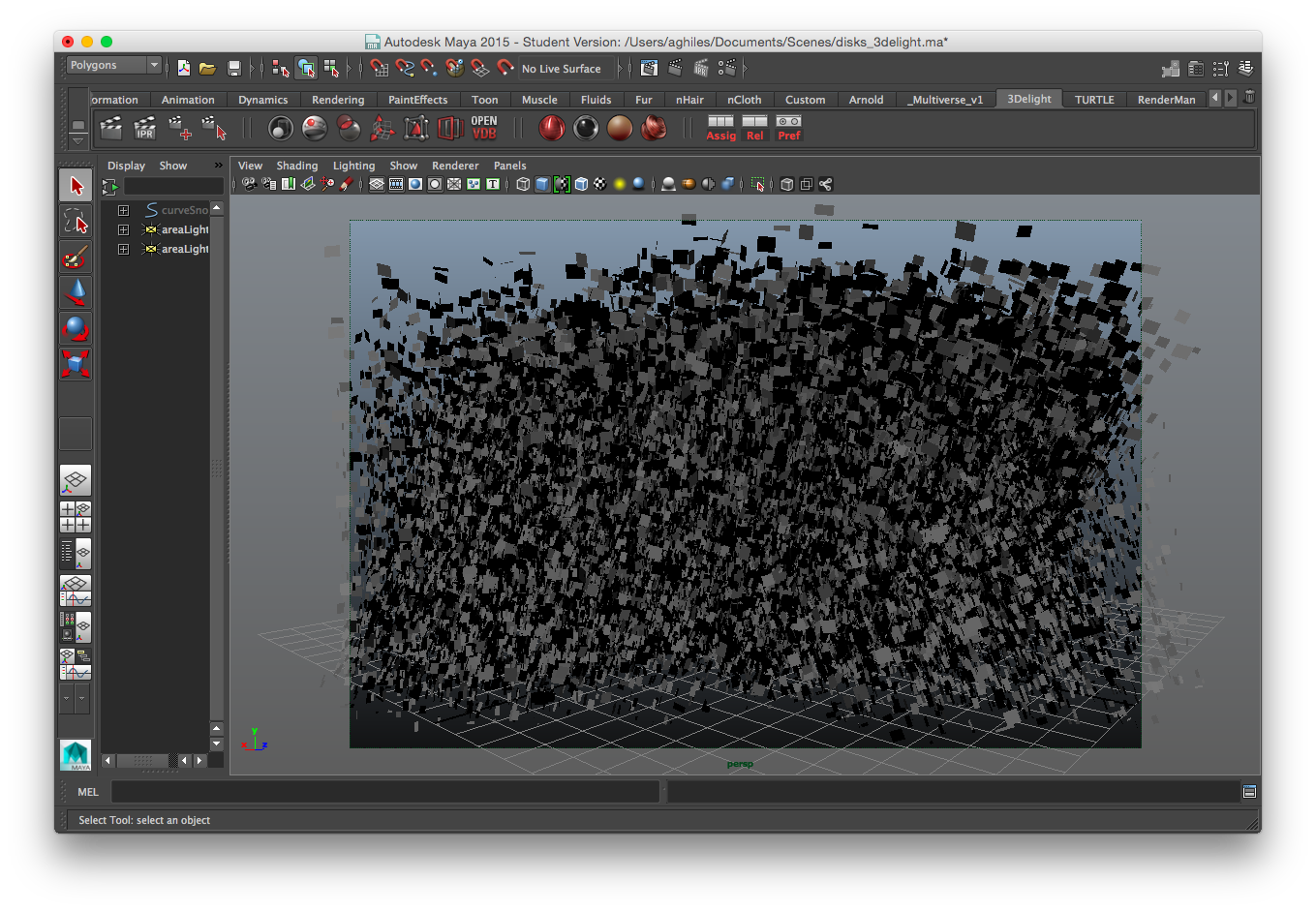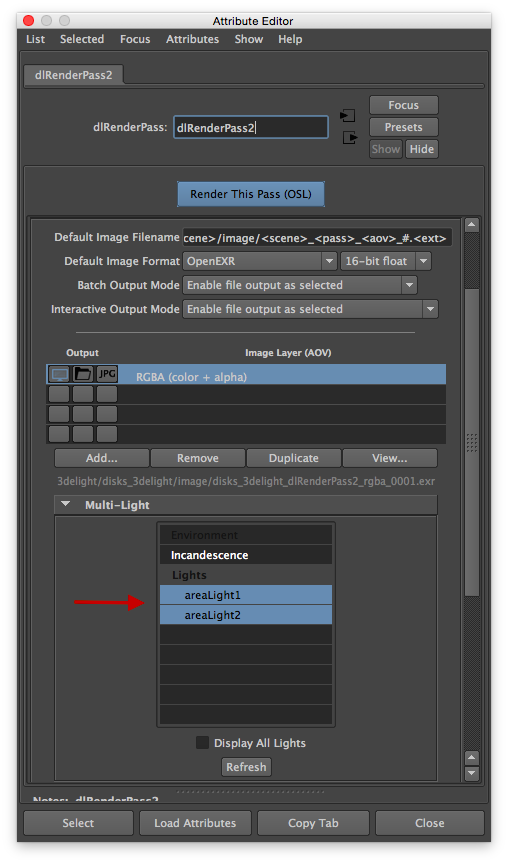...
- We will just use diffuse reflectors. We don't want complexe BRDFs sampling to get in the way. This test is not about this.
- We will disable any adaptive sampling so to make sure we have very close ray-counts.
- We will use only one diffuse bounce. This will circumvent some complexe variables from the equation (Russian roulettes and other tricks of the trade).
- The scene is easy to load, setup and render. It is available for all tested renderers.
All renders are done in Maya .
Info We disabled a specific optimisation in 3Delight that would give it an unfair advantage in the context of this test. This optimization cannot be disabled from the UI and has been disabled in the renderer itself for the purpose of this test. If you render the scene below using a standard 3Delight, it would go about 10-20% faster compared to the results below.
2015.
The scene looks quite ugly in the viewport: just a large collection of rectangles generated using PaintEffects.
...
* Taking into account total number of rays traced but not CPU usage.
Extra Test For 3Delight
3Delight has a feature called multi-light. It let's you separate lighting components per light or per sets of lights. It is a subset of the LPE feature in OSL parlance. This extra test was done to see the performance degradation when using this feature. Setup is easy and can be enabled in the Image Layers section of the OSL render pass. Just select the RGBA layer and select the two area lights.
Select the two area lights to split the RGBA into two additional outputs (one for each area light)
In the snapshot of 3Delight Display below, you can see the resulting beauty (top left) and the the two area lights
Render time is almost identical, 64 secondes for the render.
Conclusion
3Delight's OSL-based path-tracer provides outstanding performance results. Building a rendering core around the OSL shading system, as opposed to just "integrating" OSL in the renderer, seems to have given 3Delight a good performance advantage.
Multi Light in 3Delight doesn't have a perceptible adverse effect in this test (although from experience, rendering much more Multi Light AOVs, one can expect a 1-3% penalty).
Resources
| Arnold | 3Delight OSL | RenderMan RIS | |
|---|---|---|---|
| Maya Scene (ASCII) | |||
| Statistics | stats_arnold.txt | stats_3delight.txt | stats_3delight.xml |
| EXR images (linear) |


